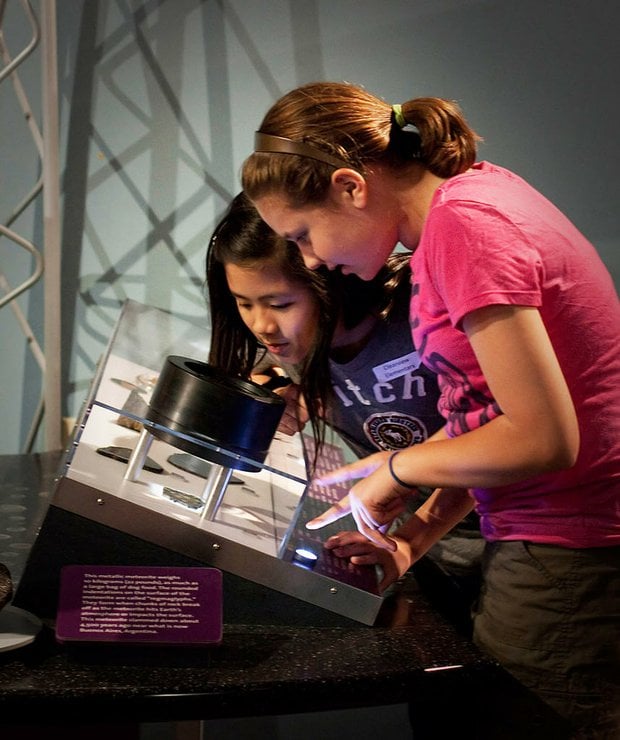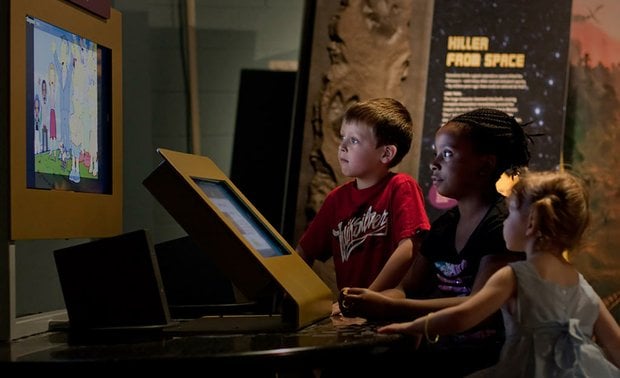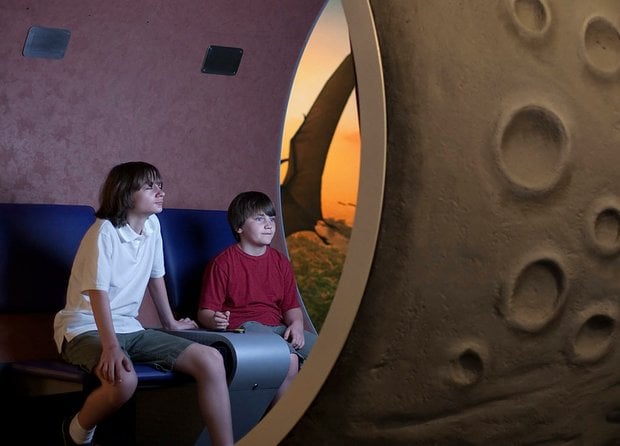Great Balls of Fire!
“How did our solar system form? What are asteroids and comets like – how big are they, what are they made of, are they different? What impact have these space rocks had on our planet and are we at risk? Are we in trouble here?” These questions, posed by Dr. Paul Dusenbery, are all answered in his 3000 square-foot exhibit, Great Balls of Fire!, which opens at the Reuben H. Fleet Science Center on January 19.
In addition to serving as project director for this traveling exhibit (San Diego will be its fourth stop), Dusenbery is the executive director of the Space Science Institute and also the director of the institute’s National Center for Interactive Learning.
When asked how he’s able to simplify something as complex as “solar-terrestrial physics research,” Dusenbery says the key is in distilling a big idea into one sentence. “Comets are messengers from space that have had a big impact on Earth’s history and are likely to influence the future as well,” he explains. “Once we had that basic understanding and defined what our big idea was, then we could look at other aspects of the project, [such as] what kinds of interactives are we going to want to be able to use to tell the story?”

The exhibit is broken into four categories: Origins, Asteroids, Comets, and Impacts and Risks. “We were able to work with three middle-school teams of students as part of the design team,” Dusenbery says. “These young people were just absolutely marvelous to work with – we asked for their input and feedback, and they helped with performance and evaluation.” The students, around 30 total, assisted on the development of the project for over a year. “When they started, most of them were at the end of 7th grade. We introduced it to them, they had to think about it over the summer, and basically, it was their whole 8th grade experience.”

Eleven to 13-year-olds fall into what Dusenbery refers to as the “educational sweet spot.” He adds, “Many studies have shown that if you can impact middle school kids – get them to engage in that age group – you’ll have a much better chance of attracting them to STEM [Science Technology Engineering Math] careers.”

One of the more difficult scientific ideas to convey was an exhibit about light spectrum curves. “It’s a challenge even to talk about it,” Dusenbery says, as he proceeds to break it down with ease. “Stars and objects give off light. The Sun gives off lots of light, and we live by it. The Sun shines and it reflects a lot of its light off of objects that don’t have their own light source, like these small space rocks. Reflected light from asteroids, for example, comes back and scientists can actually observe these light curves, the variation of light signals from the asteroids, with a telescope. They can look at how the light changes, and this tells them a lot about how fast the object might be rotating. It can also tell about composition. Light curve analysis is really an important observation tool.”
Asteroid expert Al Harris and his colleague Brian Warner translated light curve properties into an interactive exhibit called Killer Asteroids. “They developed an interactive, virtual way of looking at asteroid light curves that mimics what happens in outer space,” Dusenbery explains. “Visitors come in and have to pick from different types of rotating asteroids and objects and shapes they’re presented with, and decide which object would be giving the light curve they see up there on the screen.”
One of the most popular interactive exhibits is the “pod,” in which visitors are invited to participate in a mission to an asteroid belt. “You get into this 2-seater device and take off from a futuristic space station,” Dusenbery describes. “The audio-visual is very well done. You have these avatar-like people that come in and interact with you and explain your mission.” After the regular asteroid belt mission, there is a surprise mission to another part of the solar system.

Other interactive exhibits include a water impact test. “You push a button and this ball moves up and then it drops into the water tank and there’s a high-speed camera that takes pictures, so you can play it back on the computer screen and see the impact of the object on the water. What’s so cool about that, is the likelihood of a space object hitting Earth on land is much smaller than it would be in water.”
Should we worry about one of these space rocks colliding with our planet any time soon? Dusenbery says no. “There is a very, very slight risk for people being impacted by a large comet or asteroid in their lifetimes.”










